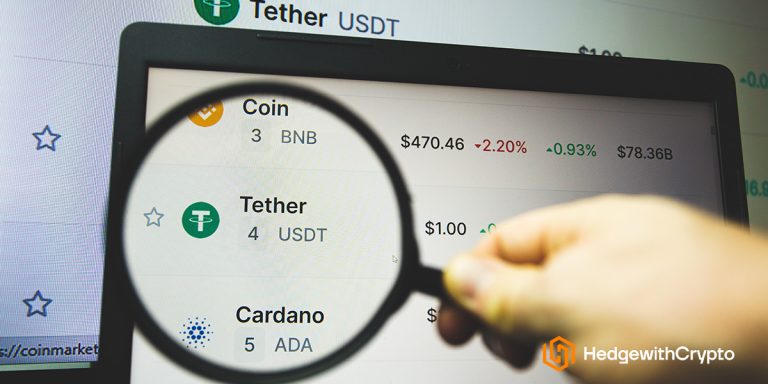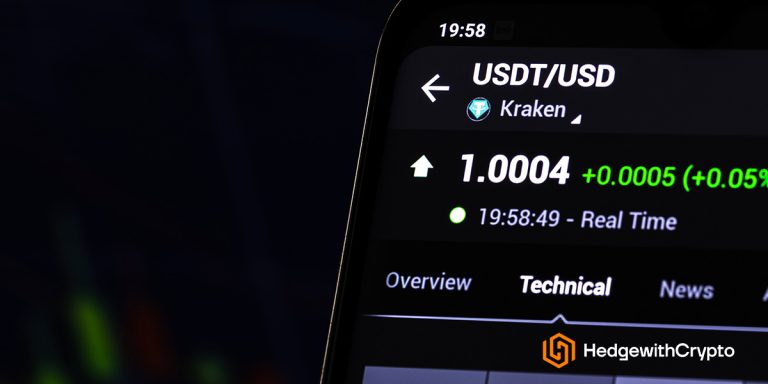This Is How Long It Takes To Transfer USDT
- USDT transfers on the ERC-20 network may typically take 1 to 10 minutes. If network congestion is high, expect up to 30 minutes.
- Using a faster blockchain network such as Solana or Polygon will result in a USDT transaction speed of as little as 5 to 20 seconds.
- Increasing the gas fee payment will speed up a USDT transaction; however, there is no guarantee.
TABLE OF CONTENTS
How Long Does It Take To Send USDT?
The length of Tether (USDT) transfers depends on the blockchain being used. External factors such as network congestion and wallet address can speed up or slow down a USDT transaction. On average, USDT transfers may take 1 minute to 10 minutes to complete using the ERC-20 network. Transaction times can be as much as 30 minutes during periods of high congestion. If a faster USDT transaction is needed, sometimes a higher gas fee will help to move the transaction to the front of the queue.
PoS blockchains, such as Solana and Polygon, are known for their incredible speeds and can also be used to transfer USDT. The developers behind both Solana and Polygon claim that each blockchain can handle a theoretical maximum of 65,000 transactions per second (TPS). Although both currently work far below that claimed capacity (approx. 2,000 TPS), the high transaction throughput means that USDT transactions can be sent and received on average within 5 to 20 seconds.
At the lower end of the spectrum is Omni, a meta-layer created on top of Bitcoin where 4.6 transactions can be processed per second. Coupled with the high demand for the network, USDT transactions can take up to 1.5 hours during high congestion. Regardless of the blockchain, external factors, including high network congestion and the destination address, can also slow a USDT transaction down.
Factors That Affect The USDT Transaction Times
While USDT can be sent across various blockchains, network congestion and the destination address can impact the transaction speed for token transfers.
- Network congestion. Although the internal architecture of all USDT-compatible blockchains is different, the transaction times of all blockchains can be severely impacted when there is a higher volume of users. As the number of users increases, it becomes harder for a blockchain to process more transactions. However, the effect of network congestion is amplified for blockchains that can’t offer high throughput. For example, at times of high network congestion, USDT transactions completed on the Ethereum blockchain may take tens of minutes longer. In comparison, USDT transactions completed on the Solana blockchain may take tens of seconds longer.
- Destination address. Wallet addresses are another factor that can influence how quickly USDT transactions get from A to B. There are two main types of cryptocurrency wallets: non-custodial wallets, often referred to as personal cryptocurrency wallets, and custodial wallets, such as wallets kept in a cryptocurrency exchange. For security, certain wallet providers can require a predefined number of confirmations from a blockchain before USDT is transferred.
USDT Isn't The Quickest Stablecoin
USDT is not the quickest stablecoin to transfer on a blockchain network. However, the answer to this question is slightly more complex than simply saying that USDT is not the fastest. The speed of USDT transactions depends on the chosen blockchain and external factors such as network congestion and the destination address. This is also true for other US dollar stablecoins such as USDC and TUSD. Even decentralized stablecoin protocols, built on top of multiple blockchains, are limited by the speed of the associated blockchain.
In short, while USDT may not be the fastest cryptocurrency to transfer, it is also not the slowest. Various speed-related factors influence all stablecoins in the cryptocurrency market.
Related: Tether Halts USDT Minting on Algorand and EOS Networks
You Can Speed Up A USDT Transaction
One of the only ways to speed up a USDT transaction is to increase the gas fee payment. A gas fee is generally required to send a transaction across a network. Either a miner (PoW) or validator (PoS) requires the gas fee to process the transaction and record the outcome onto the blockchain.
Some blockchains allow senders to increase the gas fee so miners or validators favor the transaction. Other blockchains, such as Ethereum, also allow users to add a tip to a transaction so that it is preferentially processed. Whether increasing the associated gas fee or leaving a tip, there is still no guarantee on the transaction's time.
Number of Confirmations Required For USDT
As USDT can be sent using multiple blockchains, the number of confirmations depends firstly on what blockchain USDT is being sent across. Some cryptocurrency wallets and exchanges only support the transfer of USDT via one network, while others allow USDT to be sent via multiple networks.
For example, on Coinbase, USDT must be sent using the Ethereum (ERC-20) network. However, on Binance, USDT can be sent using the Ethereum (ERC-20), BNB Chain (BEP-20), and Tron (TRC-20) networks. The number of confirmations required to complete a USDT transfer to the top-ranking crypto exchanges is:
- Crypto.com: Ethereum (ERC-20): 12 confirmations
- Kraken: Ethereum (ERC-20): 20 confirmations, Tron (TRC-20): 20 confirmations
- Coinbase: Ethereum (ERC-20): 14 confirmations




